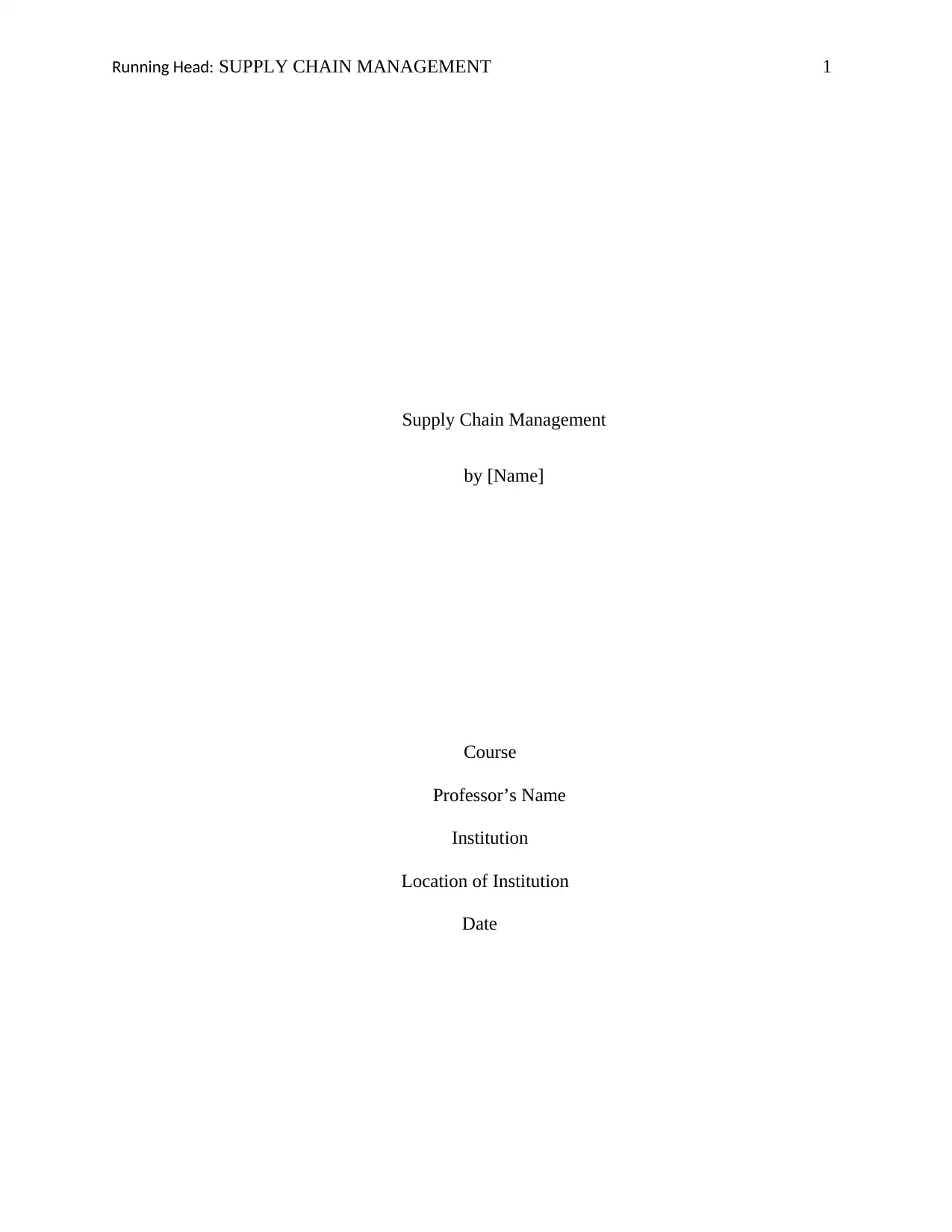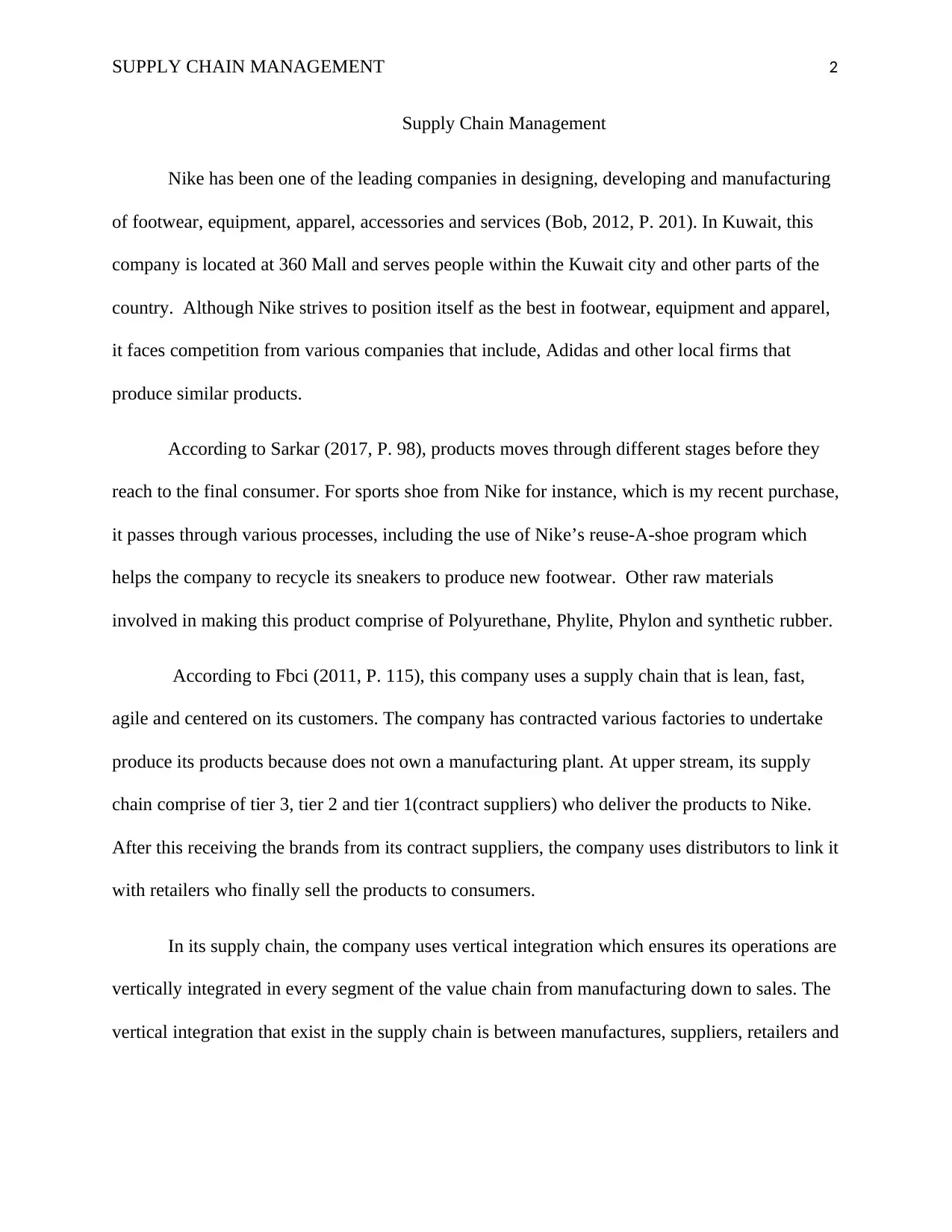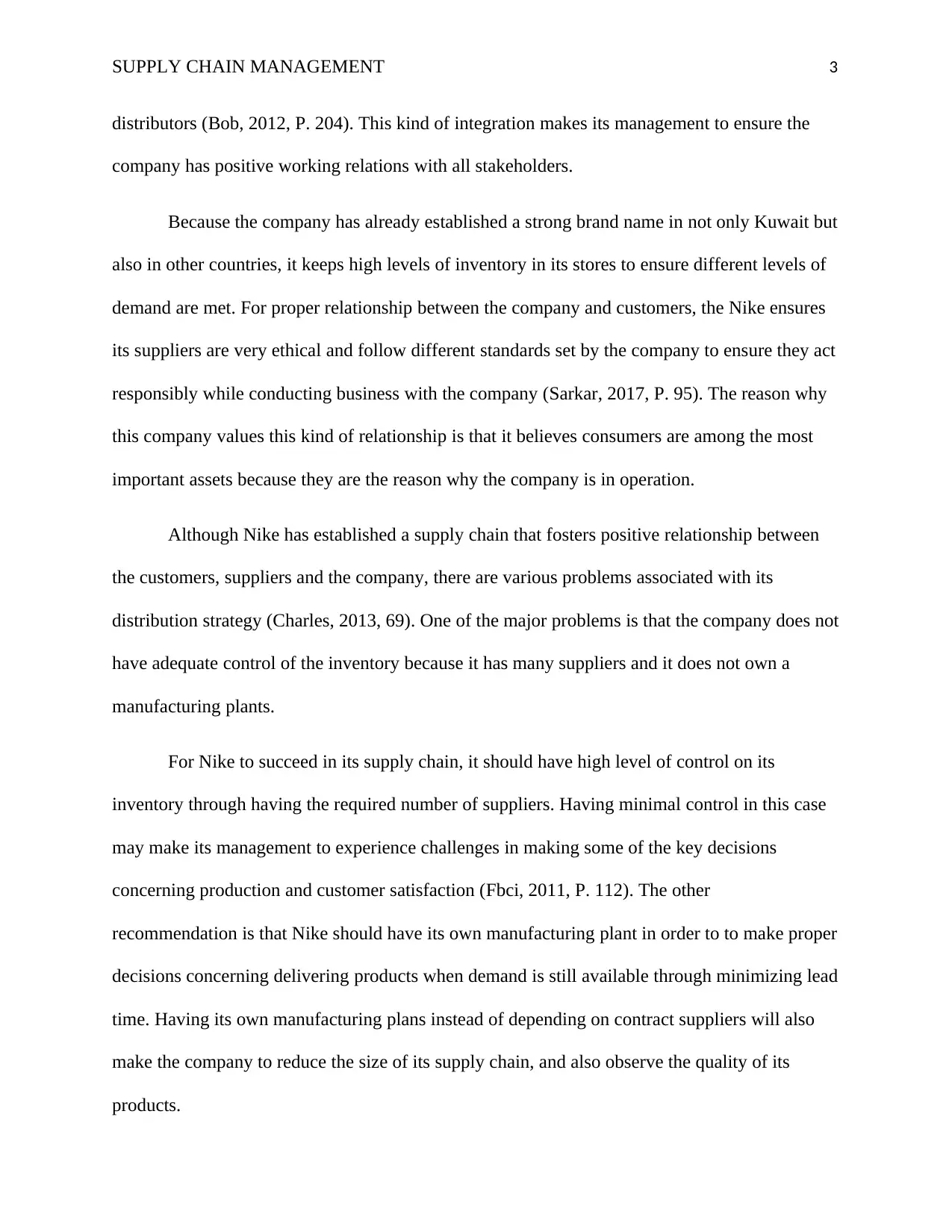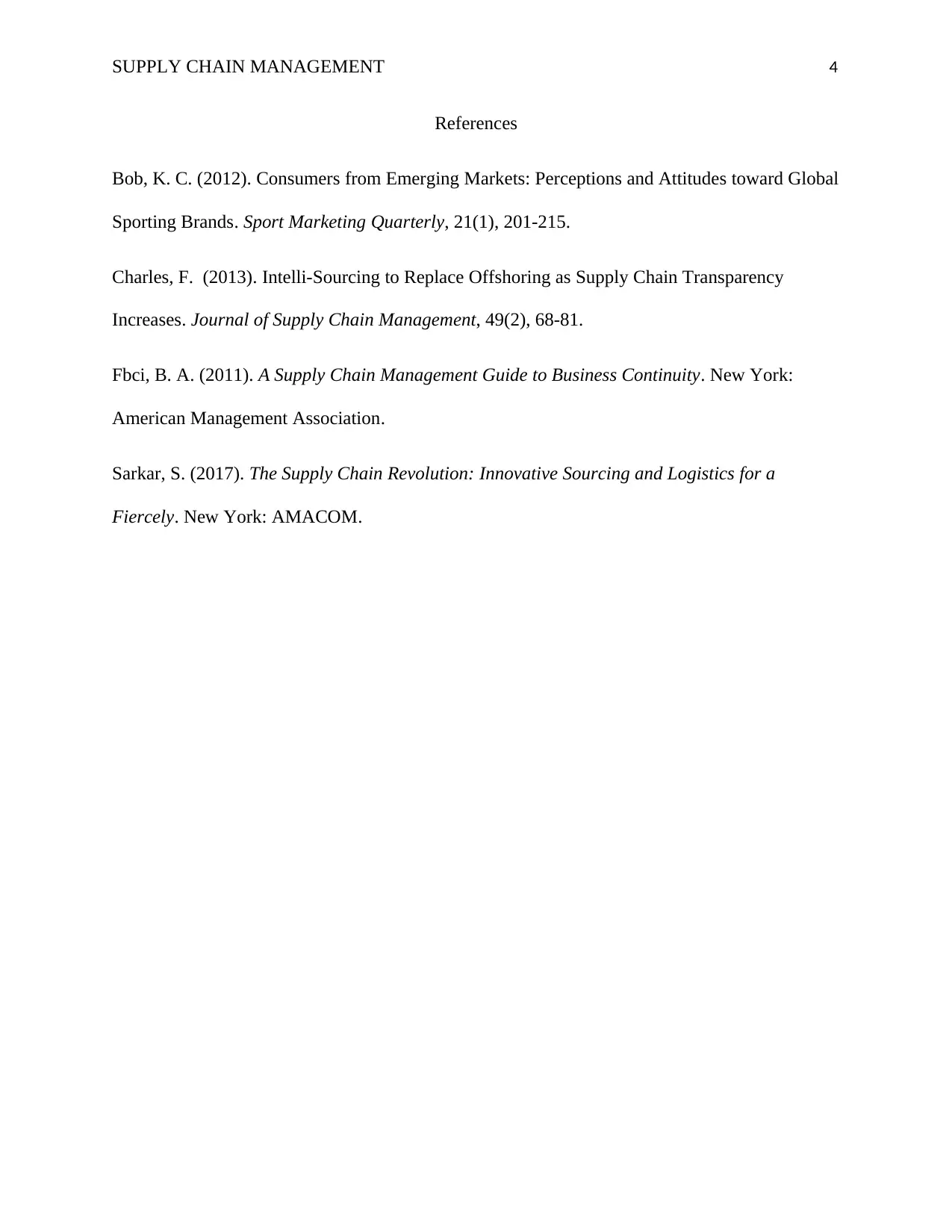Supply Chain Management: A Case Study of Nike in the Kuwait Market
VerifiedAdded on 2023/06/12
|4
|819
|173
Report
AI Summary
This report examines Nike's supply chain management in Kuwait, focusing on its strategies, challenges, and potential improvements. Nike, a leading company in footwear and apparel, operates in Kuwait through the 360 Mall, facing competition from Adidas and local firms. The company employs a lean, fast, and agile supply chain, contracting factories for production and utilizing distributors to reach retailers. Vertical integration is a key aspect, fostering positive relationships with stakeholders. While Nike maintains high inventory levels due to its strong brand, challenges exist in inventory control due to numerous suppliers and a lack of manufacturing plants. Recommendations include increasing inventory control through fewer suppliers and establishing its own manufacturing plant to reduce lead times and improve product quality. The report references various sources to support its analysis and recommendations.
1 out of 4











![[object Object]](/_next/static/media/star-bottom.7253800d.svg)